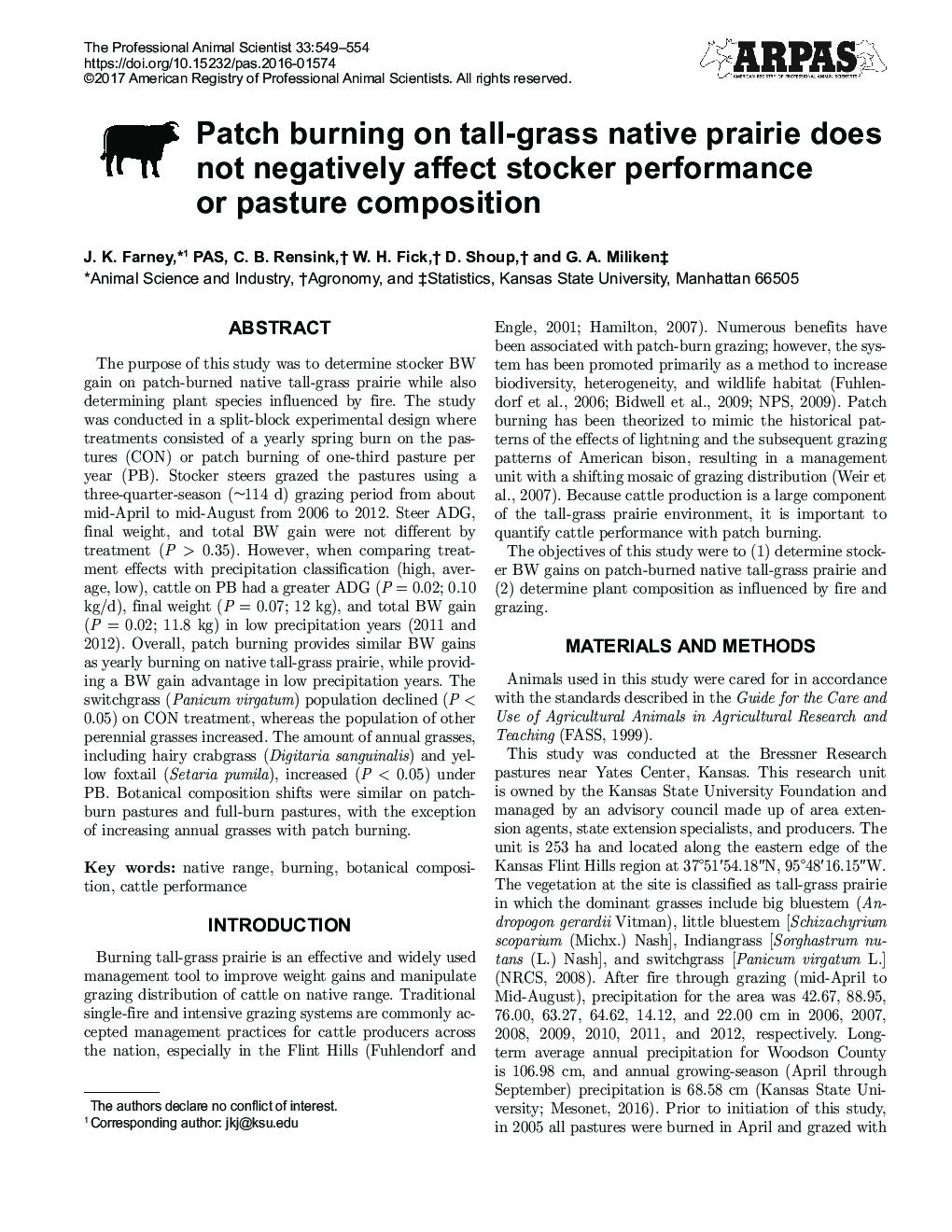| Article ID | Journal | Published Year | Pages | File Type |
|---|---|---|---|---|
| 8503725 | The Professional Animal Scientist | 2017 | 6 Pages |
Abstract
The purpose of this study was to determine stocker BW gain on patch-burned native tall-grass prairie while also determining plant species influenced by fire. The study was conducted in a split-block experimental design where treatments consisted of a yearly spring burn on the pastures (CON) or patch burning of one-third pasture per year (PB). Stocker steers grazed the pastures using a three-quarter-season (~114 d) grazing period from about mid-April to mid-August from 2006 to 2012. Steer ADG, final weight, and total BW gain were not different by treatment (P > 0.35). However, when comparing treatment effects with precipitation classification (high, average, low), cattle on PB had a greater ADG (P = 0.02; 0.10 kg/d), final weight (P = 0.07; 12 kg), and total BW gain (P = 0.02; 11.8 kg) in low precipitation years (2011 and 2012). Overall, patch burning provides similar BW gains as yearly burning on native tall-grass prairie, while providing a BW gain advantage in low precipitation years. The switchgrass (Panicum virgatum) population declined (P < 0.05) on CON treatment, whereas the population of other perennial grasses increased. The amount of annual grasses, including hairy crabgrass (Digitaria sanguinalis) and yellow foxtail (Setaria pumila), increased (P < 0.05) under PB. Botanical composition shifts were similar on patch-burn pastures and full-burn pastures, with the exception of increasing annual grasses with patch burning.
Related Topics
Life Sciences
Agricultural and Biological Sciences
Animal Science and Zoology
Authors
J.K. PAS, C.B. Rensink, W.H. Fick, D. Shoup, G.A. Miliken,
